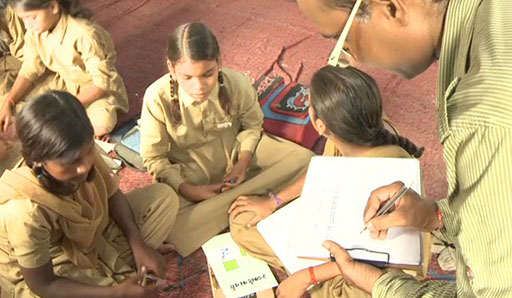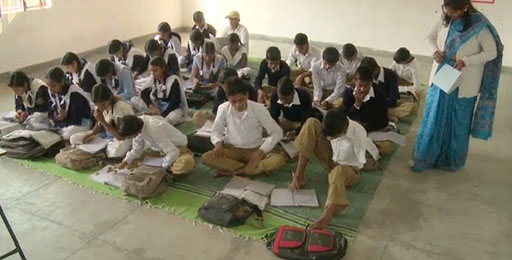2 Monitoring your class
Activity 2: Monitoring and giving feedback
Read Resource 1, ‘Monitoring and giving feedback’. Annotate the document as you read it, noting the ideas that you already implement, the ones that appeal to you and that you could easily implement, and any questions that you have. Do this with a colleague and compare your notes, if possible.
Video: Monitoring and giving feedback |
The next two activities – which should be undertaken on different days – invite you to purposefully monitor your students as they work.
Activity 3: Monitoring the whole class

Give your students some classwork to do independently and silently for approximately 15 minutes. A short textbook-based reading or writing activity would be ideal for this. While your students are working, stand back and observe them. Consider the following questions:
- What kinds of things are your students doing?
- Do any of them appear unsure of what to do? How do you know?
- Are your students working at different speeds? How can you tell?
- What can the quicker ones do when they finish?
- Do you anticipate that some of the students will not finish within the time set? How can they be supported?
- How will you evaluate your students’ learning from the task you have set them?
Activity 4: Monitoring groups

Divide your class into groups of five or six and ask them to do a short talk-based task. This could involve making up a story to accompany a picture or responding to a problem or a controversial question. The group discussion should last no more than 15 minutes. Remind your students how to work politely together, taking turns and listening to one another’s contributions.
Walk around the class, observing and listening to your students as they talk.
Consider the following questions:
- What kinds of things are your students doing?
- Did they understand your instructions? How can you tell?
- How have they organised themselves for the task?
- Do they need additional support? If so, what kind?
- Are any students silent?
- Are any students especially confident?
- How will you evaluate your students’ participation in and learning from the task?
Pause for thought Activities 3 and 4 invited you to observe and monitor your students as they undertook language- and literacy-related tasks individually and in a group.
|
Watchful monitoring is one of the core skills of an effective teacher because it helps them gauge the extent to which their students make learning gains from the tasks they are set.
Whether such monitoring involves the whole class, small groups or individual students, the following question should be at the forefront of the teacher’s mind: how is this lesson being experienced and understood by my students?
1 Attitudes and practices regarding monitoring, assessment and feedback
